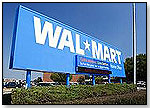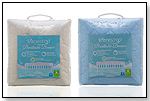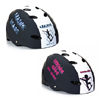|
|
Wal-Mart Steps Up Safety Retail Giant Mimics EU in Toy Regulations
 MEGA Brands' most recent recall came on top of a slew of others — one from Hobby Lobby, two from Battat and one from Infantino. These all lend weight to the many efforts by various legislative bodies to sharpen the standards and penalties for manufacturers found at fault. MEGA Brands' most recent recall came on top of a slew of others — one from Hobby Lobby, two from Battat and one from Infantino. These all lend weight to the many efforts by various legislative bodies to sharpen the standards and penalties for manufacturers found at fault. There are two toy safety bills in discussion in the House and the Senate, as well as moves within legislative bodies in the United States and Canada to tighten standards considerably. The states of Washington, California, Colorado, Hawaii, Massachusetts, Minnesota, Pennsylvania and Wisconsin are either debating or have just passed such measures. These moves pale in comparison, however, to what the European Union, on one side, and Wal-Mart, on the other, are doing. The former has made stringent proposals to the European Parliament, and there is little doubt these will be enacted. The latter has created a long-overdue fait accompli by issuing in late January an edict of what is and is not acceptable. Both sets of standards are tougher than what politicians are discussing — or what toy manufacturers would like.  Wal-Mart has said the following: Wal-Mart has said the following:• It is your responsibility as a supplier to monitor all legislation and to produce product that complies with all laws and Wal-Mart requirements, whichever is more stringent. • Wal-Mart encourages the placement of traceability information meeting the following requirements on all children's products: a date code or lot code sufficient to determine the day and year of production; and a date code or lot code sufficient to determine the location (factory) of production, if the product was made in more than one location. [And when Wal-Mart encourages you to do something, it is usually good business practice to do it.] • These requirements apply to all children's products purchased for sale in U.S. Wal-Mart and Sam's Club stores, beginning fall 2008. The table below outlines safety standards (in parts per million) for the European Union, the United States and Wal-Mart:
It is interesting to note that the new Wal-Mart standards are identical to the old EU criteria. I would assume that Wal-Mart will again follow the EU once the latest EU proposals have become law — if only to allow Wal-Mart to have one worldwide standard. Also, most other countries, notably Australia/New Zealand, ASEAN and Japan, have toy safety criteria identical to those of the EU and will probably follow suit in changing them according to new legislation. Most of the execs I have spoken to are going to stick to one worldwide standard — the proposed EU criteria — on the premise that these will be acceptable to Wal-Mart and be well within the strictest possible new criteria enacted by the United States or elsewhere. The relative costs in developing products and in manufacturing to meet different criteria are very similar. A sensible CEO might hence do the right thing, stay on the safe side, and feel good about it. The penalties of guessing wrong can be severe. Not falling in line with Wal-Mart's wishes basically means commercial hara-kiri. The consequences of selling in Europe in violation of EU criteria are even more severe — jail and payment of a king's ransom.  Writer's Bio: Lutz Muller is a Swiss who has lived on five continents. In the United States, he was the CEO for four manufacturing companies, including two in the toy industry. Since 2002, he has provided competitive intelligence on the toy and video game market to manufacturers and financial institutions coast-to-coast. He gets his information from his retailer panel, from big-box buyers and his many friends in the industry. If anything happens, he is usually the first to know. Read more on his website at www.klosterstrading.com. Read more articles by this author Writer's Bio: Lutz Muller is a Swiss who has lived on five continents. In the United States, he was the CEO for four manufacturing companies, including two in the toy industry. Since 2002, he has provided competitive intelligence on the toy and video game market to manufacturers and financial institutions coast-to-coast. He gets his information from his retailer panel, from big-box buyers and his many friends in the industry. If anything happens, he is usually the first to know. Read more on his website at www.klosterstrading.com. Read more articles by this author |
| ||||||||||||||||||||||||||||||||||||||||||||||||||||||||||||||||||||||||||||||||||||||||||||||||||||||||||||||||||||||||||||||||||||||||||||||||||||||||||||||||||||||||||||||
Disclaimer Privacy Policy Career Opportunities
Use of this site constitutes acceptance of our Terms of Use.
© Copyright 2025 PlayZak®, a division of ToyDirectory.com®, Inc.



